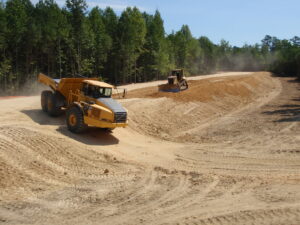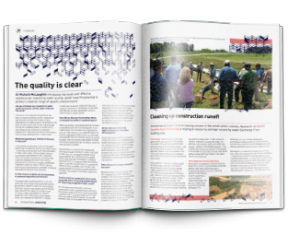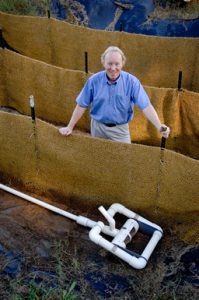Home
Soil and Water Quality in Constructed Environments
Protection of our surface and ground water resources from nonpoint-source pollution is a major emphasis in the Department. The most widespread pollutant is sediment, which can originate from farms, construction sites, and streambank erosion.
My program is focused on reducing the amount of sediment in runoff from construction sites. Recently we’ve been testing existing practices, such as sediment traps and inlet protection, to determine how efficient they are in removing sediment. We are also testing new systems and devising alternatives to the current practices. Examples are the use of surface outlets for basins, porous baffles to improve settling in basins, and various uses of polyacrylamide flocculants to reduce erosion and turbidity.

We have established the Sediment and Erosion Control Research and Education Facility (SECREF) at the Lake Wheeler Road Field Laboratory for conducting much of our testing. SECREF is part of the Soil and Water Environmental Technology Center at North Carolina State University. We continually investigate the effectiveness of various approaches to erosion, sediment, and turbidity control on actual construction sites. Education is a critical part of my program, including full workshops, targeted trainings, fact sheets, and presentations at local, state, and national programs. My group also provides technical support for both public and private organizations involved in erosion and sediment control on construction sites.
In addition, we are investigating methods to improve soil properties once construction activities have been completed, with the goal to improve vegetative establishment and growth and to reduce runoff by increasing infiltration. The potential for alternative vegetation, such as wildflowers, to further enhance the environmental benefits of high-infiltration soils, is also being investigated.
Note: Rich McLaughlin will be in phased retirement starting July 2021 and will no longer be initiating new projects nor accepting new graduate students.
Training and Educational Videos
Featured in International Innovation

The quality is clear Environmental impact is an increasing concern in the construction industry. Research at North Carolina State University is helping to reduce the damage caused by water discharge from building sites.

Porous baffles and surface outlets have been proven to result in sediment retention well over 90%.
Erosion, Sediment, and Turbidity Control Training
